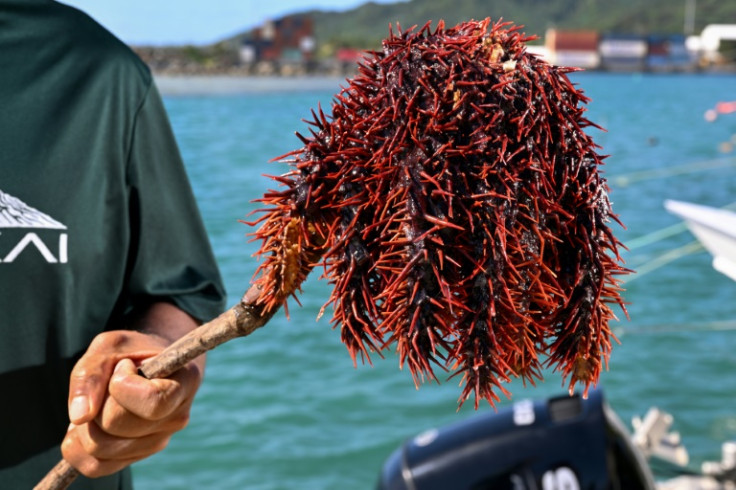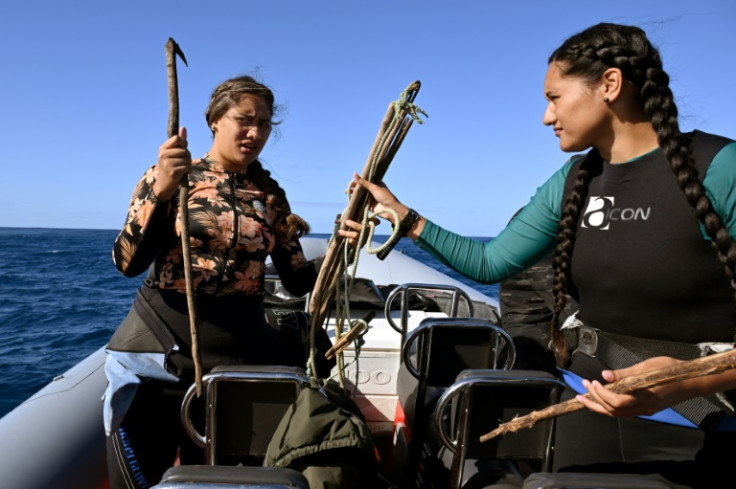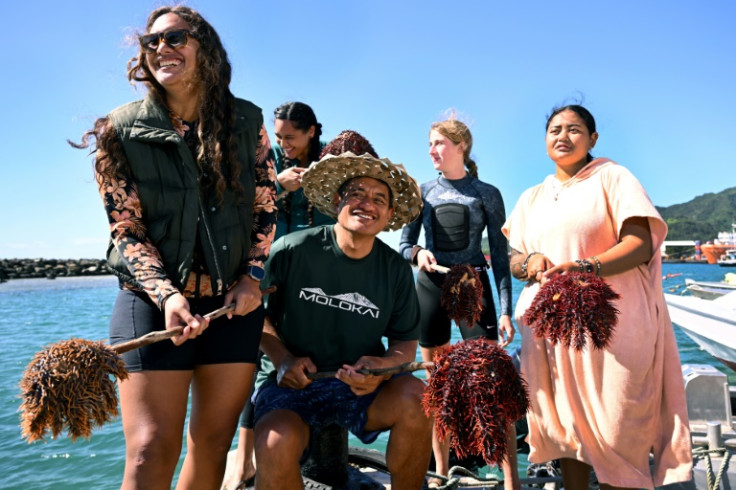Divers clutch picket spears as they plunge beneath the waves, searching hordes of hungry starfish destroying the coral reefs across the Cook Islands.
These makeshift instruments are their greatest weapons within the conflict towards crown-of-thorns starfish, a coral-munching species consuming via tropical reefs already weakened by local weather change.
The Cook Islands, a South Pacific nation of about 17,000 folks, is within the grips of a years-long outbreak, says marine biologist Teina Rongo.
“It could actually fully kill off your complete reef, proper across the island,” mentioned Rongo, who organises volunteers defending the reefs fringing the isle of Rarotonga.
“I believe there appears to be a Pacific-wide outbreak in the intervening time, as a result of we’re listening to different nations are dealing with related challenges.”
A single crown-of-thorns grownup can eat greater than 10 sq. metres (110 sq. toes) of reef annually, squeezing its abdomen via its mouth to coat coral in digestive juices.
They pose a serious menace to Australia’s Nice Barrier Reef, the place scientists have developed robots that search out the prickly invertebrates and inject them with poison.
“In the intervening time, you principally kill them by injection,” mentioned researcher Sven Uthicke, from the Australian Institute of Marine Science.
“It could possibly be vinegar, it could possibly be lime juice or ox bile.
“Others are constructing chemical attraction traps. It is all very promising — but it surely’s within the growth stage.”
Rongo finds it quickest to pry the feasting starfish unfastened utilizing a picket stick lower from the dense timber of the Pacific Ironwood tree.
“Principally, we use a persist with a hook on the finish,” he mentioned.
“We have made some modifications over time as a result of we had been getting pricked by these starfish. It is painful.”
Named for his or her a whole lot of venomous spikes, crown-of-thorns starfish have as many as 21 fleshy arms and might develop bigger than a automotive tyre.
They’re usually present in such low numbers that they don’t seem to be thought-about an issue.
However sporadically populations explode in a feeding frenzy that quickly strips the life from reefs.
They spawn in “plague proportions”, in response to the Australian Institute of Marine Science, and are a serious driver of coral loss.
From the Crimson Sea to the Pacific Ocean, crown-of-thorns outbreaks look like changing into each extra frequent and extra extreme.
“Some argue that the crown-of-thorns has change into power in the previous few a long time,” mentioned Rongo, speaking in regards to the reefs of the South Pacific.
Scientists suspect these outbreaks are triggered by a mixture of elements, together with vitamins leached into the ocean from agriculture and fluctuations in pure predators.
However the harm they’ll trigger is getting worse as reefs are weakened by local weather change-fuelled coral bleaching and ocean acidification.
“That is why it is essential for us to assist the reef,” says Rongo.
Scuba divers scour the Cook Islands’ reefs for hard-to-spot starfish wedged into dimly lit crevices.
As soon as peeled off the coral, the starfish are pierced with a thick rope to allow them to be dragged again as much as a ready boat.
The day’s haul is dumped right into a plastic chest earlier than the starfish are lugged ashore to be counted, measured and mulched for backyard fertiliser.
They’re referred to as “taramea” in Cook Islands Maori, which loosely interprets to “spiky factor”.
The volunteer divers working with Rongo and his environmental group Korero O Te Orau — or Information of the Land, Sky and Sea — take away 1000’s of starfish yearly.
Rongo is spurred by the devastation from the nation’s final main infestation within the Nineties.
“I used to be a part of that eradication effort.
“We had been too late after we did resolve to do one thing about it. It went on and ended up killing the reef.”

AFP

AFP

AFP
Source link
#Cook #Islands #Wages #War #Plague #Hungry #Starfish



